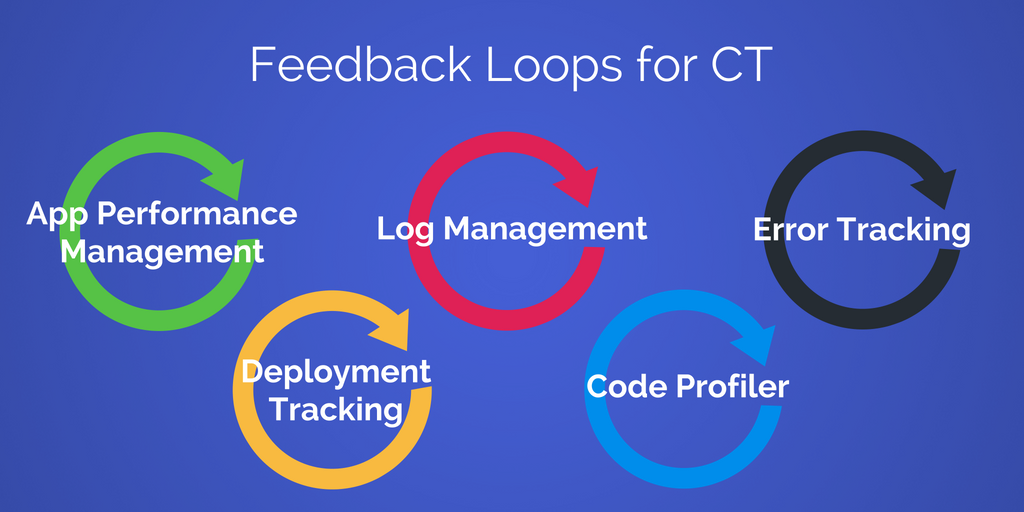Continuous Testing Requires Faster Feedback Loops

For Agile and DevOps teams trying to move the needle of progress, CI/CD has become the gold standard. High-performing teams are “shifting left” by automating more and more steps of the software development lifecycle. CI/CD helps teams deliver more value to customers faster by removing manual processes and minimizing human error.
However, Agile and DevOps teams continue to fall short on one crucial element of the CI/CD pipeline: test automation. According to Tricentis, 88% of software development teams have adopted Agile, but only 26% have adopted automated testing.
It’s safe to say, then, that even fewer teams have adopted continuous testing, the fully-evolved form of automated testing. Continuous testing means that teams have implemented automated tests at every stage of the SDLC, not just during QA.
In order to successfully implement continuous testing, DevOps teams need the right mix of tools, people, and processes. Most importantly, they need fast and frequent feedback loops to guide their testing efforts.
What are feedback loops?
Feedback loops tell your team whether or not their development efforts are paying off. The faster and more detailed the feedback, the more information your team has to make corrections and improve the application.
Continuous testing simply cannot exist without feedback loops at every stage of the SDLC. This is a big reason why CT is so difficult to implement. Not only do you have to build automated tests, you also need a clear picture of the test results.
Your team should be gathering detailed feedback on your app’s performance from development to post-production. The right feedback loops will give you this insight.
Traditional feedback loops – logging tools, code profilers, performance monitoring tools, etc. – are too disjointed and shallow. These tools don’t work together and they don’t provide depth of insight needed to quickly fix issues.
At Stackify, we’ve made it our goal to create faster feedback loops so developers can build better applications. Here are a few of the feedback loops available through Retrace and Prefix:

Application performance management
Application performance monitoring tools tell you how well your application is running. Application performance management, as Stackify CEO Matt Watson explains, describes a more detailed process of monitoring performance and finding the underlying causes of issues.
Application Performance Management tools like Retrace give you code-level insights that help you pinpoint the exact cause of the error. Retrace manages app performance during both pre-production and post-production stages.
Log management
Logs have long been a go-to resource for development teams. However, traditional log management tools don’t show you where errors occur. It’s nearly impossible to correlate a single web request to the error and log across multiple tools.
Retrace is the only log management tool that puts log data and errors in one place. Retrace matches up errors and logs in the same transaction so you can quickly find and fix the issue.
Error tracking
One major advantage of continuous testing is the ability to quickly pinpoint errors. This is possible because each new code commit is tested immediately and separately from other commits. Developers know exactly which batch of code is the source of the issue.
DevOps teams should track errors at every stage of development, including post-deployment. When combined with log data, developers can easily figure out what happened within a specific web request or transaction.
Deployment tracking
No matter how good your testing, errors will always sneak into production. Traditionally, deployments go unmonitored, making it difficult to pinpoint causes of performance issues.
Deployment Tracking from Retrace is a critical new feedback loop for continuous testing. Deployment tracking quickly shows you when deployments occur, where they were deployed, and any changes in app performance due to that deployment.
After all, continuous testing shouldn’t stop after deployment. The best DevOps teams monitor the entire lifecycle of the application.
Code profiler for development
Finally, continuous testing wouldn’t be “continuous” if developers couldn’t check their code while writing it. Code profilers are the first line of defense when it comes to catching exceptions, errors, and performance issues before they go into production. This should be the heart of every continuous testing workflow.
Code profilers are even more powerful when combined with the other four feedback loops we just discussed. With more information in hand, developers have the ability to write better code the first time.
Types of automated tests
Now that we’ve looked at various types of feedback loops, let’s look at specific automated tests you can implement into your CI/CD pipeline. The most important types of automated tests are unit tests, regression tests, and user tests.

Unit tests
Unit tests help to verify your application at its most basic level, including methods or classes. These work at a fast rate, are easy to maintain, and can adjust to any changes in your system. Unit testing examines individual units of source code, usage procedures, and operating procedures to determine if these are firing on all cylinders.
Regression test suite
A regression test suite is another way of verifying that your application works well as a whole. The regression stage should be entirely automated. A common issue with regression test suites is that they can be slow and bulky, but these can be addressed by streamlining its role within your application, which speeds up your continuous testing process and saves costs.
With regression testing, prune your suite extensively to ensure there are no duplications. Treat these tests as production codes and keep things as clean as possible. Avoid flaky tests by fixing and eliminating them.
User testing
Finally, you won’t be able to know how good your application is until you sit users down and have them test it. User testing is a critical feedback loop of the continuous testing process, which exists as usability testing and user acceptance testing.
Usability testing ensures that users find the application intuitive and logical. User acceptance checks whether users can complete transactions with the application in a real-world setting. By satisfying the user, your product will have a stronger reputation without requiring you to break the bank on testing processes.
User testing is not always automated, but it is still an important test to run. If the rest of your testing is automated, you’ll have more time to run manual user tests and get that invaluable human feedback.
Commit to faster feedback
Feedback loops play a critical function in Continuous Testing. They provide faster, deeper insight into the results of your automated tests. In other words, your automated tests are only as effective as your feedback loops.
Teams cannot successfully implement continuous testing without fast, high quality feedback loops. The more insight you can glean from each test, the faster your team can improve the product. By setting up feedback loops at every stage of development, your team will be able to build higher quality applications faster than ever before.
Ready to build out your CI/CD pipeline? Check out the top Continuous Integration tools and deployment tools for 2018.
Improve Your Code with Retrace APM
Stackify's APM tools are used by thousands of .NET, Java, PHP, Node.js, Python, & Ruby developers all over the world.
Explore Retrace's product features to learn more.
Learn More











